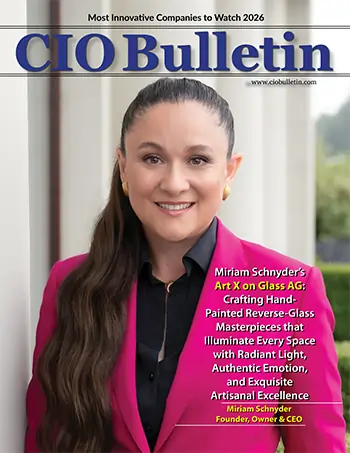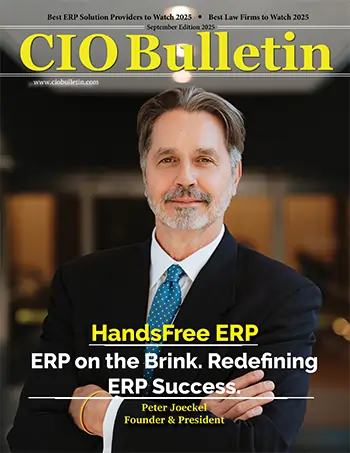Home Industry Retail What is retail price? - An Ove...
Retail

CIO Bulletin
21 November, 2023
Introduction
One of the keys to a successful business is selling at the correct price. If your products are inexpensive, you may sell more of them yet struggle to turn a profit. However, if your products are excessively pricey, buyers will visit rival stores, which will reduce your market share.
So, what is retail price? When it comes to pricing, there isn't one tried-and-true method that suits all retailers, though. Production expenses need to be balanced with revenue goals, customer trends, competitive pricing, and even a modicum of psychology.
You are in the right place if you have ever asked, "What is retail price?" This article will explain the basics of retail price, explain factors influencing retail price, retail price components, supply and demand and explain profit margin calculation.
What is retail price for your product is essential to its commercial success? The basics of retail price state the price must be both high enough to generate income and pay your expenses and low enough for clients to be willing to pay it without losing money. Market research is the only approach to determining the best price for your good or service.
Coupling analysis, brand-price trade-off, Van Westendorp, and Gabor-Granger are the four primary research methodologies for effective pricing strategies.
What is retail price that is most popular? Let's examine in detail the most popular pricing tactics employed by retailers and factors influencing retail price.
Every pricing plan, with its own strategies and goals, has a different short- and long-term outcome, as was previously mentioned.
What is retail price is the first? Customers may be most familiar with this price structure. The Manufacturer Suggested Retail Price (MSRP), which is frequently applied to mass-produced goods like consumer electronics or home appliances, is intended to standardize the costs of goods sold across various locations.
In essence, keystone pricing sets the retail price of a product by doubling its wholesale or production costs.
The MSRP, which is typically twice the wholesale price—as we previously mentioned—is the real cause of this practice.
Bundle pricing, sometimes referred to as multiple pricing, is the practice of offering a collection of goods at a single price. (e.g., three- or five-pack socks or underwear).
As the name implies, retail price components of discount pricing is the practice of offering products at a lower price, whether it be through in-store markdowns, coupons or sales codes sent to the customer directly, or even through in-store discounts.
What is retail price and which are the three main external sources affecting them? These are:
When thinking about how to run practically any business, the first thing that springs to mind is competition and supply and demand. Retailers will conduct in-depth research to learn about their competitors' identities and business practices in a certain market.
The term "channel" describes the several ways that consumers shop for goods. The most popular ones include home shopping television networks, retail stores, catalogs, the internet, and direct sales. In order to maintain and increase their market share, many merchants today have embraced multi-channel tactics.
Geographical terms relate to certain market places. It can be defined broadly or precisely, depending on who the store is trying to reach. Retail geographies include, but are not limited to, the Los Angeles region, the Midwest, Mexico, the internet, South America, Midtown Manhattan, and the European Union. These examples demonstrate how geographical locations on the Internet can be city blocks, cities, states, countries, continents, and even the entire world.
To remain competitive across the board, retailers typically create pricing strategies tailored to competitors, channels, and geographic areas. However, there are other factors to take into account as well.
Six global retail specialists were questioned on the technology that businesses should invest in as they merge their online and brick-and-mortar stores in the post-pandemic era. What they said was as follows:

The costs associated with getting your product from the production facility to the final consumer, or your customer, are known as distribution costs or distribution expenses.
The entire cost of distribution would comprise all individual distribution costs incurred at each level. For example, if your distributor ships a product to a shop, who then sells it to the final consumer, profit margin calculation, Manufacturers will occasionally have a production facility in one location and forward product pick-up to another location. The total cost of distribution includes all expenses incurred in transporting the product from the site of production to the point of pickup.
Other kinds of costs can also be classified as distribution costs. Handling costs are an excellent example to use; these costs can include:
Higher company taxes must, according to accounting principles, translate into reduced shareholder payouts, lower salaries, or higher product pricing. Therefore, a crucial factor in tax policy discussions is the actual impact of corporate taxes on capital, labor, and consumers. What is retail price and how they are affected by taxes there is currently a dearth of empirical research on the impact of corporation tax increases on consumer prices, despite a substantial body of work examining the incidence of company taxes on shareholders and the implications on salaries in more recent years. Federal policymakers utilize models that presuppose corporation taxes are completely incident on labor and capital alone. The largest federal corporation tax cut in modern American history was implemented with the passing of the Tax Cuts and Jobs Act in 2017, but it was unclear how this would affect consumers.
Conclusion:
FAQ:
1. How do production costs impact the final retail price of a product?
Because they have an effect on profit margins, variable costs can influence a company's pricing strategy. A business can boost its profit margins and even raise the price at which it sells its goods by cutting its variable costs. They might be decreased by boosting productivity or settling on more affordable rates with suppliers.
2. Do Sustainable Practices Impact Retail Pricing?
Costs associated with sustainable business practices are higher and may be passed on to customers at a "green premium," but they may elect to forego purchases altogether or make less expensive options.
3. How can businesses adapt their pricing strategies to changing economic conditions?
Businesses can learn what their core client base really values by collecting feedback, evaluating consumer data, and performing market research. Then, they can modify their pricing plan accordingly. Moreover, value-based pricing enables service providers to maximize profits in a recession.
4. How Does Technology Influence Dynamic Pricing in Retail?
Dynamic pricing algorithms are designed to automatically modify prices in real-time, taking into account many aspects such as consumer behavior, competition, supply, and demand. Algorithms can perform data analysis, establish pricing guidelines, make real-time price adjustments, test, and optimize.
5. Is There an Ethical Dimension to Retail Pricing?
Businesses must make sure that their pricing policies are open, non-discriminatory and that they can defend any price variations in order to avoid moral dilemmas. The exploitation of susceptible customers is an additional ethical pricing challenge.







